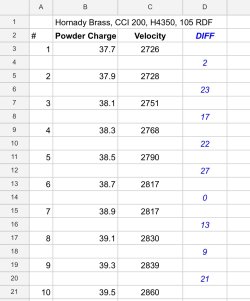the big greasy
Well-Known Member
Everyone usually very helpful here so here is my questions.
Had a wonderful load for my tikka 223 1-8 twist shooting 75 a maxes with varget. Now they are discontinued. Tried everything under the sun to get the newer 75 eldm to shoot, they just won't. I've ordered some 77 SMK to try.
My rifle and mag allows me to load very long.
What's everyone's thoughts on determining seating depth and load powder amount. What first and how does one go about it. Just trying to save some components, but want the best way no matter what that is.
My components are 77 SMK, varget, rem 7 1\2.
I did have a crony, but it didn't fair too well the other day, so it's out of commission.
Thanks.
Had a wonderful load for my tikka 223 1-8 twist shooting 75 a maxes with varget. Now they are discontinued. Tried everything under the sun to get the newer 75 eldm to shoot, they just won't. I've ordered some 77 SMK to try.
My rifle and mag allows me to load very long.
What's everyone's thoughts on determining seating depth and load powder amount. What first and how does one go about it. Just trying to save some components, but want the best way no matter what that is.
My components are 77 SMK, varget, rem 7 1\2.
I did have a crony, but it didn't fair too well the other day, so it's out of commission.
Thanks.

